The Illustrated Ages of the World
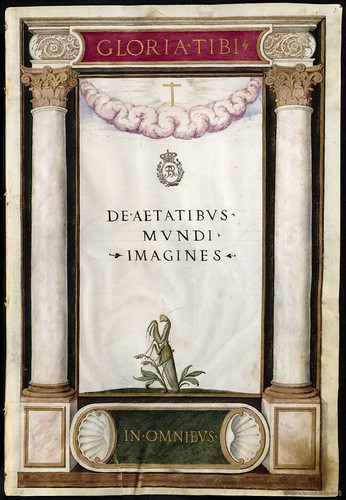

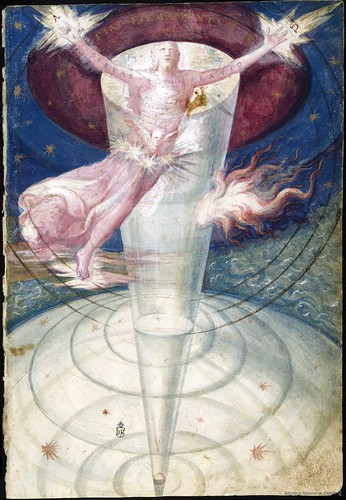
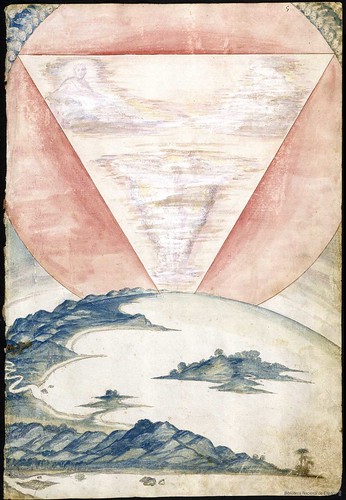
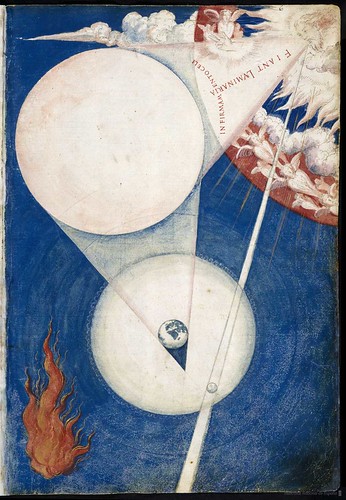

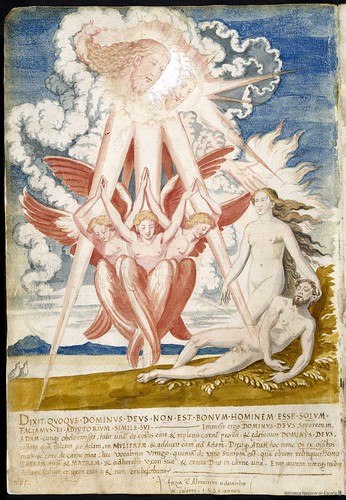
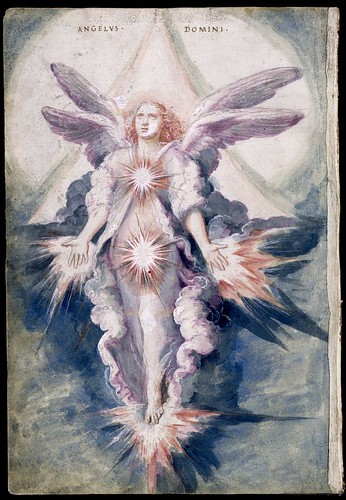
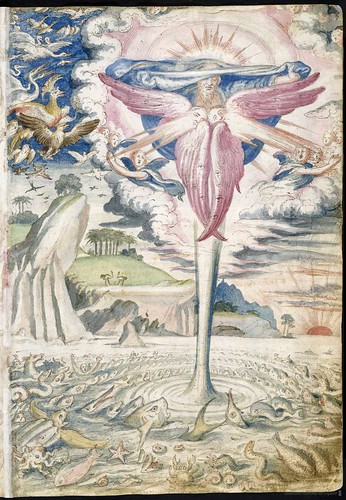
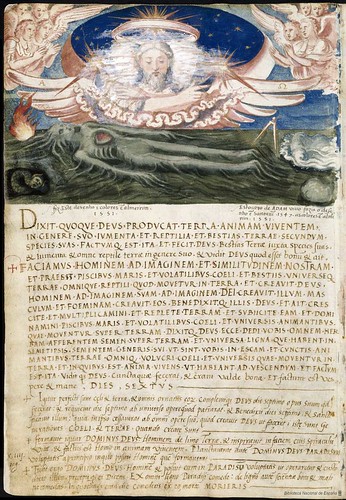
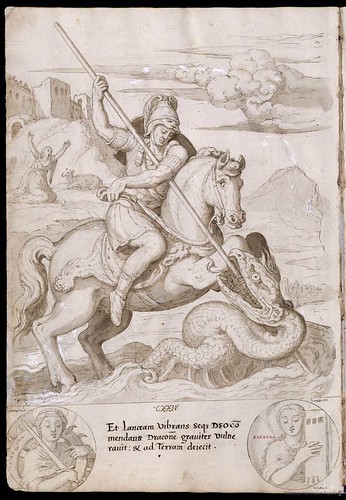
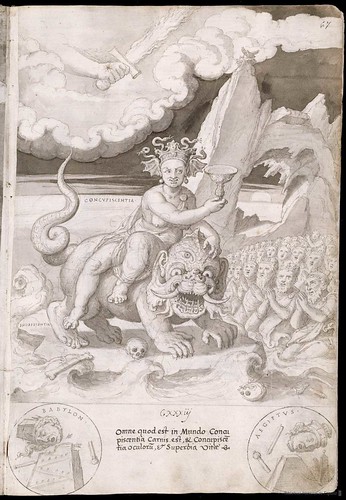
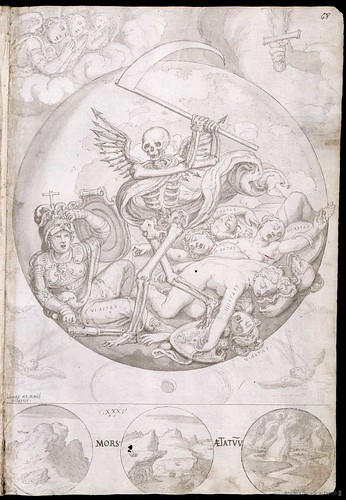
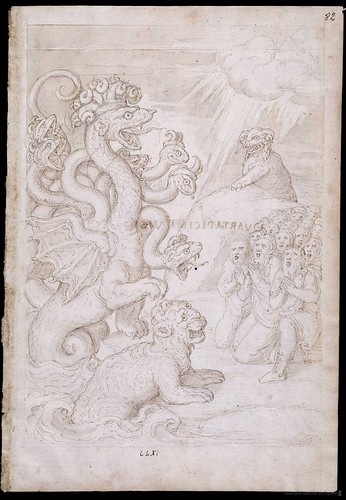
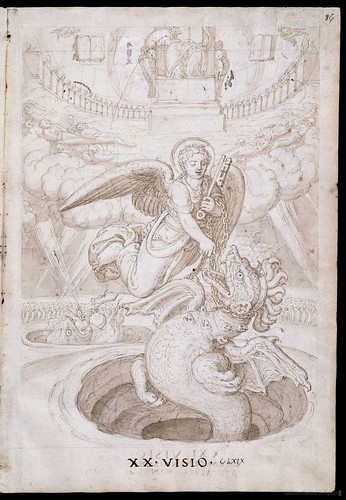
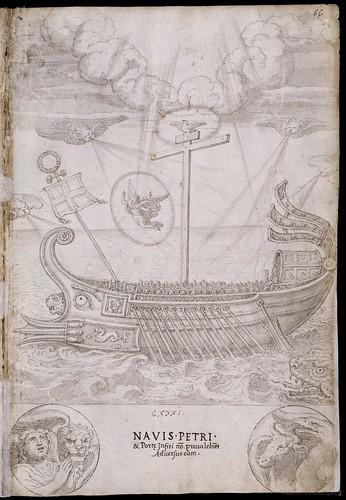
Francisco de Holanda (Hollanda) (1517-1585) was a painter, historian, architect and humanist philosopher from Portugal.
He apprenticed under his father as a manuscript miniaturist at the royal court in Lisbon and was sent to Rome by King João III in 1538. For the next nine years, Holanda studied among the notables of the Italian Renaissance, including Parmiagianino, Giambologna and, most significantly, Michelangelo.
It was Michelangelo who introduced Holanda to the classical ideals of the Renaissance which were given voice in Holanda's best known written work, a Neo-Platonic treatise on art in three volumes, 'Da Pintura Antigua' (1548). The second volume features dialogues with Michelangelo (during the period he painted the Sistine Chapel) and Giulio Clovio, among others, making Holanda, along with Vasari and Condivi, one of the 'official biographers' of Michelangelo. The book series played an important role in spreading the tenets of the Renaissance in Portugal.
Other works of note produced by Holanda include drawings of Roman architecture, studies of Italian art and architectural heritage, painted portraits and a survey of Lisbon urbanisation.
Among Holanda's surviving books of drawings, 'De Aetatibus Mundi Imagines' is the most important. Over thirty years - from 1543 to 1573 - Holanda sketched and painted designs intended to portray the history of the world according to the bible. It is one of the treasures of the National Library of Spain and is available online in full (150+ folio sketches, 15 of them coloured).
The sketchbook (or the significance and attribution of same) was only discovered in the mid-20th century. There is scant accessible commentary about the work online, although, with the publishing of a facsimile edition in 1983, a book review attempts to give a (critical) guide to the artistic merit of Holanda's biblical illustrations:
"The quality of Holanda's drawings in 'De Aetaibus Mundi' is decidedly uneven. The great majority cannot claim more than modest merit either as imaginative conceptions or works of art. As the series continues they become increasingly dependent on Antwerp prints, in particular those of Gerard de Jode [..]; nor can it be said in extenuation that Holanda improved on his engraved models either artistically or iconographically.The author of this piece (see below) goes on to question whether or not Holanda is in fact the designer of those Genesis-inspired pages in any event (seen after the frontispiece, above; the rest of the images in this post are in no particular order).
In striking contrast to the more or less routine and derivative nature of the great bulk of the drawings, the first four [..], which illustrate the first four days of the Creation (Genesis, I, 1-19) are extraordinarily impressive and original."
I'm less persuaded by a fussy high-art critic than I am by my own eyes. The complex symbolism and dazzling designs - even if derivative - in this series of intriguing drawings calls to mind alchemy treatises and horror movie motifs as much as it does religious iconography. That evocative attribute alone qualifies it as worthy material for a post on BibliOdyssey methinks.
- 'De Aetatibus Mundi Imagines' is online at Biblioteca Digital Hispánica but I'm not sure if I can link directly to the html version. If this doesn't work, click the link at the bottom of this page. Or choose number
fourtwelve on this page or search for 'Aetatibus' from this page. Beyond that, there is a flash turn-the-pages version - a bit wonky in firefox - but I don't know if the whole manuscript is available. [sorry, everything on this site appears to be cookie-controlled and they time out back to the front page and I don't remember the way in from there, although I *think* it's within the 'Obras Maestras' section.] I saved more than thirty other manuscript page images in this webshots album. I didn't adjust these images at all, so the drawings are fairly shiny. I reduced the brightness and scrubbed out a few stains in the images above.[Update 2015:] Webshots evolved, as sites do, but regrettably, all the images I posted to my Webshots account were deleted by Webshots a couple of years ago because I had apparently failed to do *something* - as I later discovered - during their changing of account statuses. It was a random decision to (fortunately) post all the above images to Flickr.- The critic quote above (by John Bury) comes from a 1985 edition of The Burlington Magazine. Page one is available to non-subscribers through JSTOR. That appears to be the most specific commentary on this sketchbook online as far as I can tell.
- This multi-lingual site has excerpts/commentary about Holanda relating to a 2006 translated version (into Italian) of 'Da Pintura Antigua'.
- I like the (short) biography at Filosofia Portuguesa best [trans.] / Wikipedia.
- The Life and Works of Francisco de Holanda (in Portuguese), appropriately enough from Escola Secundária Francisco de Holanda (text excerpted from a book by Jorge Segurado). [trans.]
- Laura Camille Agoston's long article - '16th century AD' - in the 2005 Renaissance Quarterly [print version / html version] is a fairly critical review of Holanda's 'Roman Dialogues' by a Michelangelo scholar ("Holanda's Michelangelo is protean rather than divine").
- 'History 1450-1789: Portuguese Literature and Language' gives an overview of the cultural milieu in which Holanda was situated, with an emphasis on the influence of travel and empire.
- 'Dialogues with Michelangelo' by Francisco de Holanda (translated by Charles Holroyd) 2007 at Amazon. All other works by or about Holanda (or Hollanda) seem to be either unavailable or out of print. I was unsurprised to see that one of the books - 'The Bible Illuminated' - relates to Holanda and William Blake (and - or by - Swami Bhaktipada). Blake was the first person I thought about when I saw the sketches by Holanda.



















13 comments :
wow.
What's with the stick insect on the frontispiece/titlepage? And where I have I seen it before???
I was about to say that any religious history with a praying mantis on the frontispiece definitely qualifies as surrealist.
After that, I was going to say that we seem to have another precursor of Blake here, but you already noted the resemblance!
The whole thing is exceptionally cool, and I'd say those characters who think it's uninspired are probably just annoyed at its lack of resemblance to anything by Michelangelo. It does, definitely, look more like alchemical and astrological works, and more like some of the northern engravers' work (the fish bring Bruegel to mind). I especially like the scene of the exotic woman on the rather Chinese-dragon-like monster (the Whore of Babylon, I assume), but there are numerous other wonderful bits.
Excellent, A bientôt...:)
Oh, I knew I'd forget something. With a name like de Holanda, presumably he was originally from Holland? Or is there some part of Portugal called Holanda? I mean, think of names like Leonardo da Vinci, Giulio Romano, Diana Mantovana, etc.
Taa.
His father was from Holland. Although I ended up deciding it was far beyond the scope of this post (and to a fair extent blocked by subscription requirements), there is something of a thread running through some of the backstory - particularly in relation to Michelangelo - about attitudes/knowledge/artistic ability with respect to the Northern European schools (Dutch mostly) -vs- the Italian Reniassance.
To be honest, I didn't quite 'get it', but Holanda's background is of at least some significance (not to the same extent as the influence of his Portuguese upbringing, which, again, informs a lot of the background in extensive and potentially prejudiced - in relation to his hopes back home to change attitudes to art and art funding, thus influencing his writing - ways, but his Dutch heritage is a 'factor')
Ah. I'll just say that most art historians who deal with this period are either Italian specialists or Northern specialists. That means artists like de Holanda tend to get short shrift.
Blake, definitely. The combination of geometric shapes, dramatically rendered anatomy, fire, rays of light, clouds, all in a very dramatic shading.
Amazing find, Peacay. IMHO, some of the images anticipate William Blake.
Sir, I am a very big admirer of your much-more-than-a-blog :-)
I do not know if these is the proper place for this but I want to present to you also my blog with chinese art:
http://taakeblog.blogspot.com/
Thank you again and respects from Estonia.
Sorry for my poor english...
Though I deleted your comment Pic ( http://www.blogger.com/profile/00965738405807908465 ), I thought I'd keep the layout for posterity. Thanks for raising the bar with this in-the-realm-of-aesthetic construct, although the embedded link was fairly dubious...
(¨`·.·´¨) .¸. (¨`·.·´¨)
(¨`·.·´`·. ¸.·´* * * * *`·.¸.·´`·.·´¨)
`·.¸.·´ * I LOVE YOU! * `·.¸.·´
(¨` ·.· ´¨) (¨` ·.· ´¨)
`·.¸ (¨` ·.· ´¨) ¸.·´
`·. ¸ .·´
Facsimil exacto al original De Aetatibus Mundi Imagines de Francisco de Holanda editado por BIBLIOGEMMA
Segurado's book about Holanda it's unreliable.
Sylvie Deswarte-Rosa is the autority on Francisco de Holanda. She published an impressive number of articles on Holanda, in portuguese and in french:
http://recherche.univ-lyon2.fr/grac/sites/grac/IMG/pdf/CV_SDR_sites_GRAC_UMR_5037.pdf
A link to a conference on De Aetatibus Mundi (in french):
http://www.canalc2.tv/video.asp?idvideo=5077
Post a Comment
Comments are all moderated so don't waste your time spamming: they will never show up.
If you include ANY links that aren't pertinent to the blog post or discussion they will be deleted and a rash will break out in your underwear.
Also: please play the ball and not the person.
Note: only a member of this blog may post a comment.